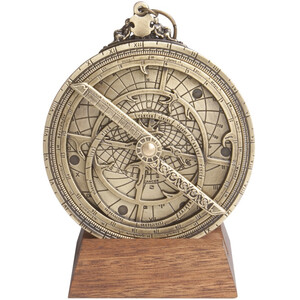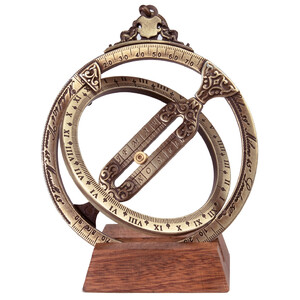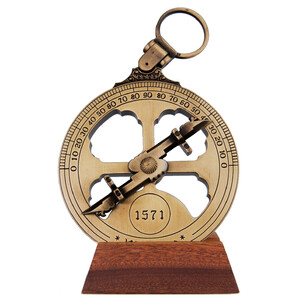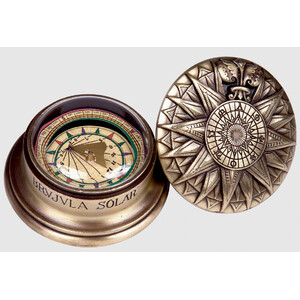Reproduction of a tide calendar and star clock, made by Humphrey Cole in 1570.
An original example of this instrument is carefully preserved in the British Museum (London).
The tide calendar or abacus (front) is used to calculate high and low tides.
A star clock (back) is an instrument used to determine the time at night by means of the position of a specific star in the night sky.
It is a typical navigational instrument.
The first known description of a star clock was written by Ramon Llull at the end of the 13th century.
Until around 1800, it was an important navigational instrument, but was then replaced by more specialised and precise instruments.
A star clock has an outer disc with the months of the year and an inner disc with the hours (half hours) and reference stars.
The star clock also has a pointer that moves on the same axis as the disc. The axis has a hole in the middle through which a star can be observed.
Since the instrument is used at night, the markings are oversized and raised.
The inner disc features a diagram showing the most important constellations and stars.
Excerpt from the "Instrument Book" by Peter Apian (German mathematician and astronomer, 1495-1552).
"If you want to know the time by means of light, turn your face towards the pole and the back of the instrument towards the pole, lift it up and look through the hole made by the nail or the centre towards the pole. As soon as you see the pole through the hole, look next to the instrument towards the two stars on either side. When you have thus brought the two stars into view, move the hour hand with your other hand so that it covers your view a little with a straight line. Then take the instrument towards you, keep the hour hand still, and move the other disc with the two stars of the Big Dipper, which are visible on 20 August, under the hour hand or the double cross ‡. If you then (with the other disc remaining still) point the hour hand at the day of the month , it will show you the hour of the night that you have been searching for in a simple way."
The attention to detail, historical interest and beauty of the design are the hallmarks of this very attractive star clock. It comes complete with a wooden base and instructions for use.






